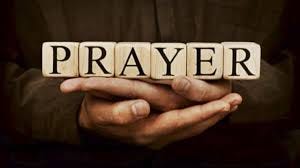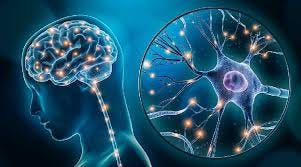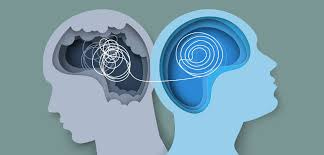Does Prayer Work? The Brain’s Surprising Answer 🧠
What neuroscience & psychology reveal about the power of prayer, regardless of your beliefs (10min Read)
TL;DR Summary:
Prayer is an intentional mental practice, beyond just religion.
Prayer impacts brain structure and activity significantly.
Neuroscientific studies show prayer engages areas linked to emotional regulation, empathy, and stress reduction.
Psychologically, prayer can create feelings of safety, connection, and calm, beneficial for anxious achievers.
The evolutionary roots of prayer may lie in social bonding and emotional coping mechanisms.
It complements (but doesn't replace) professional mental health treatments.
Practical prayer-like tools include affirmations, gratitude, visualization, and IFS-based dialogues.
Beyond Belief
I can’t be the only kid who grew up wondering if all the prayers I was sending upstairs worked, can I?
Little did I know that later in life, I would study neuroscience and be able to answer this question.
And that’s what we’ll be doing today, looking at the neuroscience and psychology of prayer.
If you’re not religious, read on; this will have nothing to do with religion and more to do with the act of praying itself.
What is prayer? Where did it come from?
And is prayer simply wishful thinking, a comforting illusion in moments of helplessness, or is there actual science that explains its undeniable calming effect?
All of this and more in today’s blog!
Let’s dive in.
What is Prayer, Really?
If we strip away cultural and religious differences, prayer universally represents a kind of intentional mental state.
One where you focus, reflect, request, or express gratitude to something or someone beyond your immediate self.
This could be God, the Universe, the Self (from IFS), or simply a sense of connection with humanity.
So, what’s it look like?
Great questions, practically, prayer might look like:
Silent Reflection: Quietly asking for guidance or clarity from your wiser inner Self.
Gratitude Practice: Mentally listing things you're deeply thankful for each day.
Visualization: Imagining being held and supported by a trusted presence or universal energy.
Intentional Affirmations: Repeating calming statements such as "I am safe," "I am enough," or "I trust myself."
Meditation: Focusing your attention on a specific intention, request, or feeling of connectedness.
Conversational Dialogue: Internally talking to a loving figure, a deceased loved one, or a guiding spirit.
All of these acts, and more, qualify as “prayer.”
They involve intentional, reflective, and heartfelt interactions with something meaningful beyond your everyday worries and fears, creating measurable benefits for your mind, brain, and body.
Where Does Prayer Come From Evolutionarily?
Prayer is more than just a cultural tradition; it's a profoundly ancient practice embedded deeply within the human psyche.
But where exactly does it come from? And why did it persist through thousands of generations across vastly different cultures?
Imagine our ancestors tens of thousands of years ago, navigating a world full of uncertainty, danger, and scarcity.
To survive, early humans relied heavily on rituals, structured behaviors meant to influence forces beyond their immediate control.
They danced, chanted, made offerings, and raised their hands to the sky, asking unknown powers for safe hunts, plentiful harvests, and protection from harm.
These initial forms of prayer weren't mere superstition; they represented humanity's first attempt to exert control over their environment by appealing to what they perceived as spiritual or supernatural forces.
Over time, these primal rituals became more structured and complex, paralleling human society’s evolving complexity.
As communities became more settled and societal roles more defined, prayer gradually transitioned from communal ceremonies to more personal, individualized forms of communication with spiritual forces.
So, How Did Prayer Endure Through the Millennia?
Anthropologists, historians, and psychologists point to several powerful evolutionary benefits.
Surviving in ancient times required managing stress, uncertainty, and communal harmony.
Prayer can offer many of these kinds of benefits.
Here are just a few:
Social Cohesion: Praying in groups created strong communal bonds, critical for the tribe's survival when facing external threats. Shared rituals united people, fostering cooperation and emotional trust.
Emotional Resilience: Prayer helped individuals manage stress and adversity by framing difficult events within a meaningful, comforting narrative. This reduced anxiety, bolstered resilience, and kept communities psychologically healthy.
Moral & Ethical Development: Structured prayer encouraged self-reflection, empathy, fairness, and moral behavior, traits that stabilized societies, enabling them to thrive.
While prayer itself doesn't reflect a direct genetic adaptation, its psychological and social benefits are clear.
The reason it continues today is simple: it works.
On a deep neurological level, your brain responds positively to prayer, making it a powerful tool for calm, resilience, and emotional strength.
These are qualities that once helped our ancestors survive, and now help anxious achievers & trauma survivors like you thrive.
Speaking of the brain, how on earth is going on up there while you pray?
Let’s talk about it.
Unlike our ancestors, we’ve got lots of neuroscience research to understand what’s going on!
How Prayer Changes Your Mind, Brain, and Body
So, what exactly happens to you on a physiological and psychological level when you pray?
I’m glad you asked.
A prayerful moment might seem simple, but behind the scenes, your brain is orchestrating an incredible symphony of changes, physically, emotionally, and psychologically.
Let's break down what’s going on in the mind, brain and body!
Your Brain: A Symphony of Neural Activity
When you enter into prayer, your brain doesn't merely relax, it reshapes itself.
Neuroscientists call this process neuroplasticity, and I’ve talked about it many times in my blogs and content!
As a quick reminder, though, this is the brain's amazing capacity to reorganize itself by forming new neural connections.
So, what’s this got to do with prayer?
Focused Attention and Neuroplasticity
Just like muscles growing stronger with regular exercise, focused prayer can strengthen neural pathways, particularly in regions associated with attention, concentration, and emotional regulation.
Regular prayer has been linked to enhanced activity in the prefrontal cortex, which, as you may know, is in charge of executive functions like decision-making and emotional control.
This creates lasting neuroplastic benefits that can improve emotional regulation and decision-making over time!
Feeling Connected and "One"
Have you ever lost yourself completely during prayer?
Feeling dissolved into something greater than your own worries?
It feels wild, but how does it happen?
SPECT brain imaging research reveals that during deep prayer, there is actually a significant reduction in activity within the parietal lobes, the region responsible for spatial orientation and the sense of self.
The result?
You momentarily lose your boundaries and feel a deep sense of connectedness and "oneness".
Relaxing the Brain with Alpha Waves
Studies using EEG (electroencephalography) document increased alpha-wave activity in the parietal and occipital regions during various prayer postures (for example, Islamic prostration).
These alpha waves correlate with deep relaxation, reduced anxiety, and activation of your brain’s parasympathetic nervous system, your built-in antidote to stress.
Distinct Neural Patterns: More Than Simple Relaxation
Prayer doesn't activate just one area of your brain though; it engages multiple brain regions simultaneously.
Long-time readers know my affinity towards network neuroscience over region specialization.
Your brain is an interconnected ecosystem of different networks and regions all working together in harmony!
Here are some of the network’s prayer hits on:
Language Areas: The words or chants you recite stimulate your brain's language and speech-processing centers.
Emotional Hubs: The limbic system (including the amygdala, hippocampus, and anterior cingulate cortex) activates, creating emotional warmth, connection, and empathy.
Motor Areas: Physical prayer postures or gestures engage motor regions of your brain.
Default Mode Network (DMN): Prayer quiets your brain's chatter-filled DMN, reducing rumination, anxiety, and promoting introspection and deeper self-reflection.
Salience Network: This network helps you tune into what's emotionally meaningful. During prayer, the salience network highlights your inner experiences, making spiritual and emotional insights clearer and more impactful.
Executive Control Network: Engaged through focused attention and intention-setting during prayer, this network supports emotional regulation, decision-making, and cognitive flexibility.
Imagine your brain like an overworked CEO.
Prayer steps in as the wise assistant, calming panic, organizing thoughts, and reminding your mental CEO: "It’s okay to pause, breathe, and trust."
Your Body: Shifting from Stress to Serenity
All of these activities in your brain cascade into tangible physiological changes in the body as well!
Studies in my favorite area of research, psychoneuroimmunology, repeatedly confirm prayer’s physical and psychological benefits.
A study by Newberg and colleagues (2015) showed that consistent prayer and meditation practice results in lower levels of cortisol (the primary stress hormone), reduced blood pressure, improved immune function, and enhanced emotional resilience.
These changes are particularly relevant for anxious achievers and trauma survivors.
Prayer provides your hyper-vigilant nervous system with clear, calming signals, reassuring your body: "You're safe, and you’re not alone."
Reduced Physiological Stress
Prayer has also been shown to significantly lower physiological arousal.
It slows your breathing, decreases your heart rate, and relaxes muscle tension.
These changes all point to prayer’s ability to shift your nervous system from the fight-or-flight (sympathetic) state to the restful, healing, restorative (parasympathetic) state.
Suggesting that regular prayer enhances emotional resilience and the capacity to cope effectively with stress and trauma!
Your Mind: A Tool for Coping and Emotional Well-being
Finally, it can affect the mind in powerful ways as well by influencing how you think, feel, and respond emotionally to the world around you.
Prayer can act as a powerful cognitive reframing tool, reshaping stressful experiences by promoting positive emotions such as hope, contentment, and empathy.
It helps shift your focus away from negativity and rumination toward a more positive, solution-oriented mindset.
Emotionally, prayer can function as a therapeutic tool, allowing you to derive meaning from life’s difficult experiences.
It provides an avenue for processing negative emotions, reducing feelings of isolation by creating a comforting connection to others, to humanity, or to a higher power.
Prayer is undeniably more than mere spiritual comfort.
Imagine your mind, brain, and body like an orchestra.
Prayer acts as the skilled conductor, guiding each section—mind, brain, and body—into a harmonious melody.
As you practice regularly, this "orchestra" gets better at playing in tune, cultivating a profound and measurable sense of inner peace and resilience.
Using Prayer as a Mental Health Tool (Even if You’re Not Religious)
If you've never considered prayer as part of your mental health toolkit, you might be missing out on a free, accessible, and surprisingly powerful resource.
Regardless of your religious beliefs, or if you have none at all, adapted prayer-like practices can be very helpful, especially when navigating anxiety, stress, or trauma.
Important Limitations to Remember
While prayer is powerful, it’s best understood as a supportive, complementary practice.
It is not a standalone solution, especially for addressing severe trauma or mental health conditions.
Here are some things to keep in mind:
Complementary, Not Curative: Prayer supports but does not replace professional, evidence-based treatments like therapy (IFS, SE, EMDR, CBT, etc.).
Personalized Results: Effectiveness can vary widely depending on your personal consistency, openness, and individual approach.
Research Gaps: Much of the existing research on prayer has a religious context, and secular adaptations of these practices still need further exploration.
How to Pray Effectively: Practical Tools for Your Daily Life
Even if you’re not religious, prayer’s neurological and psychological benefits are 100% accessible to you!
Here are some ways to add prayer-like practices into your daily life so you can get some of these benefits yourself!
Intentional Affirmations
Take 5-10 minutes daily to close your eyes, breathe deeply, and internally repeat affirmations that calm or empower you, such as:
“I trust myself and my abilities.”
“I am not alone—I am connected.”
“I choose calm over chaos.”
These affirmations can strengthen emotional resilience and directly reduce stress.
Gratitude Reflection
Make gratitude your daily prayer.
This is one of my personal favorites. I do it daily!
List three things each day for which you're deeply grateful.
Gratitude triggers your brain to release dopamine and serotonin, promoting emotional well-being and reshaping your neural pathways.
IFS-Based Internal Dialogue ("Parts Work") (Internal Family Systems Tool)
Did you really think we would make it through a blog without me mentioning IFS?!
This is another one of my personal favorites.
Spend a few minutes engaging in compassionate dialogue with your internal "parts"—the anxious, ambitious, fearful, or protective sides of yourself.
Internally ask these parts:
“What are you feeling?”
“What are you afraid would happen if you stopped worrying or striving?”
“What do you need right now to feel safe?”
This gentle, prayerful dialogue aligns deeply with Internal Family Systems therapy.
It promotes self-understanding, self-compassion, and inner integration, all key aspects of trauma recovery.
A Final Thought
So, does prayer work? The brain answers definitively, “Yes.”
Not necessarily because of divine intervention (that's a personal belief), but because your brain is wired to respond to the focused intention, emotional connection, and feeling of safety prayer brings.
The evolutionary roots, neuroscience, and psychological mechanisms all tell us clearly: prayer is much more than an ancient tradition.
It’s an evolved tool for resilience, calm, and connection.
Perhaps, on a deep psychological level, every quiet moment of prayerful reflection taps into these ancient survival strategies.
Calming your nervous system, reassuring you of your connections, and reminding you that you're not alone in the challenges you face.
I mean, what more could you ask for?!
As always, until next time… Live Heroically 🧠
Want to Work With Me? Here Are 3 Ways I Can Help You
Download my free guide “Exactly How to Get the F*ck Outta Your Own Way”: Inside you’ll learn the invisible force that keeps you stuck in your life, and exactly how to get out of your own way!
Join the Balanced Achiever Community (free): It’s the only community on earth built to help high-achieving trauma survivors get into action and out of their own way by healing the toxic shame that secretly holds them back from the relationships, health, and success they desire.
Become a paid subscriber to the Mind, Brain, Body Lab Digest: You’ll get subscriber-only video posts, email replies, access to my entire blog archive, early access to new products, workshops & tools I create!
Supporting Research
Newberg, A. B., & Waldman, M. R. (2009). How God Changes Your Brain: Breakthrough Findings from a Leading Neuroscientist. Ballantine Books.
Newberg, A. B., Wintering, N., Khalsa, D. S., Roggenkamp, H., & Waldman, M. R. (2015). Meditation effects on cognitive function and cerebral blood flow in subjects with memory loss: A preliminary study. Journal of Alzheimer’s Disease, 48(4), 849–862.
Beauregard, M., & Paquette, V. (2006). Neural correlates of a mystical experience in Carmelite nuns. Neuroscience Letters, 405(3), 186–190.
Davidson, R. J., & Lutz, A. (2008). Buddha’s Brain: Neuroplasticity and Meditation. IEEE Signal Processing Magazine, 25(1), 176–174.
Doufesh, H., Faisal, T., Lim, K. S., & Ibrahim, F. (2012). EEG spectral analysis on Muslim prayers. Applied Psychophysiology and Biofeedback, 37(1), 11-18. https://doi.org/10.1007/s10484-011-9170-1
Al-Galal, S. A., & Alshaikhli, I. F. (2015). Neurophysiological changes associated with prayer in Islam. Journal of Alternative and Complementary Medicine, 21(12), 748-752. https://doi.org/10.1089/acm.2014.0300
Pérez, J. E., & Rex Smith, A. (2015). Intrinsic religiousness and well-being among cancer patients. International Journal of Environmental Research and Public Health, 12(11), 14358-14375. https://doi.org/10.3390/ijerph121114358
Koenig, H. G., Al-Zaben, F., & VanderWeele, T. J. (2022). Religion and psychiatry: Recent developments in research. BJPsych Advances, 28(3), 172–182. https://doi.org/10.1192/bja.2021.45





















I resonate with this piece 😌
I resonate with this peace 😌